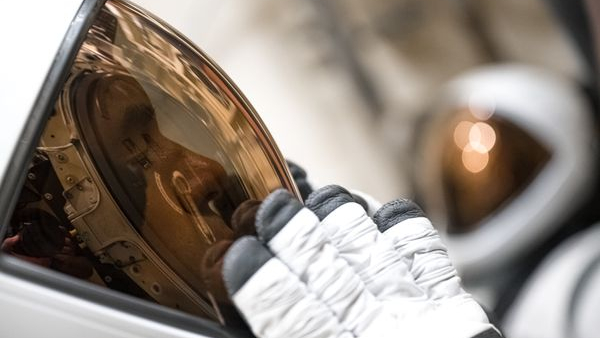How SpaceX built a new spacesuit for Polaris Dawn's private spacewalk (video)
SpaceX has given us a detailed look at their stylish and innovative new extravehicular activity suit ahead of it being worn during the Polaris Dawn mission's first-ever private spacewalk.
Two astronauts aboard the five-day SpaceX Polaris Dawn mission, which launched on Tuesday (Sept. 10), are due to perform the first commercial spacewalk on Mission Day 3, or Thursday (Sept. 12)
The SpaceX EVA suit, designed for extravehicular activities (EVAs, or spacewalks), is based on the familiar black-and-white intravehicular activity (IVA) spacesuit, but with enhancements and improvements in key areas to make it lightweight and unobtrusive, all while protecting astronauts in the unforgiving environment of outer space. "It's kind of like a suit of armor made of fabric," SpaceX principal spacesuit engineer Erik Kraus says in a new video the company posted to X.
New features, including enhanced mobility through new joints, a helmet and visor with a display, and a fabric-based material for ease of manufacturing, are detailed in the video.
While based on the IVA suit, the EVA suit's soft portions become rigid when pressurized, requiring flexure and rotational joints for ease of movement. It also has an added Faraday layer, or a conductive cage, around the suit that shields it from external electric fields.
Christ Trigg, SpaceX's senior manager for spacesuits, stated that another issue is thermal comfort for the crew during EVAs. The suit will be exposed to an extreme thermal environment and yet needs to ensure the suit's interior is comfortable and safe to touch.
The helmet features a heads-up display (HUD) with a transparent screen. This provides critical telemetry to the crew, including pressure, temperature, and relative humidity, without obstructing the astronaut's view. It also features coatings for astronaut safety.
Breaking space news, the latest updates on rocket launches, skywatching events and more!
"The EVA suit visor is made of polycarbonate and is coated with copper and Ico, or indium tenoxide," said Kraus in the video. "These two coatings together reflect the sun away from the crew, as well as reflecting infrared heat back to the crew when they are facing deep space."
The suit was designed and built at SpaceX in Hawthorne, California, with a focus on in-house manufacturing, says Maria Sundeen, manager of spacesuit fabrication. And, for ease of manufacturing, the team developed a new, fabric-based material.
Beyond the upcoming historic spacewalk, SpaceX has big ambitions for the suit. The company aims to improve its technology and make the suit more manufacturable with each generation.
"The ultimate goal is that you can put on the spacesuit and go out and get work done anywhere in the solar system and not feel like you're wearing anything more than you normally wear everyday," said Trigg.
Follow our Polaris Dawn live updates for the latest on the mission.

Andrew is a freelance space journalist with a focus on reporting on China's rapidly growing space sector. He began writing for Space.com in 2019 and writes for SpaceNews, IEEE Spectrum, National Geographic, Sky & Telescope, New Scientist and others. Andrew first caught the space bug when, as a youngster, he saw Voyager images of other worlds in our solar system for the first time. Away from space, Andrew enjoys trail running in the forests of Finland. You can follow him on Twitter @AJ_FI.

